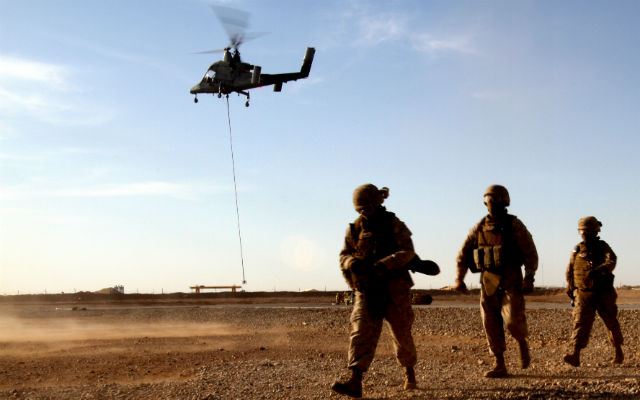The concept is one of the critical upgrades aimed at making the Lockheed/Kaman autonomous K-Max more attractive as an alternative to manned helicopters and truck convoys for certain military missions, such as re-supplying remote and often hazardous bases.
The system adds a new piece of equipment on the ground – a cargo container with a transmitter that broadcasts its location to the K-Max, Barton says.
The unmanned helicopter navigates to the location of a container and hovers directly above it. The cargo hook lowers into a funnel attached to the container, and captures the load, Barton says. It then flies back to the main operating base.
The unmanned K-Max has been operating in Afghanistan since December 2011, hauling 1.4 million kg over the first 15 months of the US Marine Corps-funded demonstration. The USMC extended the activity in August, but Barton says he believes the K-Max operation will be extended again by “other” US forces.
Meanwhile, the US Army has been funding a range of technology demonstration programmes to enhance the capability. Though discussions remain ongoing, there is no obvious path forward for funding a programme of record and restarting K-Max production.
Lockheed has discussed alternatives to a conventional acquisition programme with the army, such as a fee-for-service arrangement using either contractor-owned or government-owned K-Max aircraft, Barton says. Funding for such a programme does not appear likely “on the horizon”, he adds.
Discussions are also ongoing with foreign militaries around the world about the unmanned K-Max, Barton says.
Source: Flight Global

